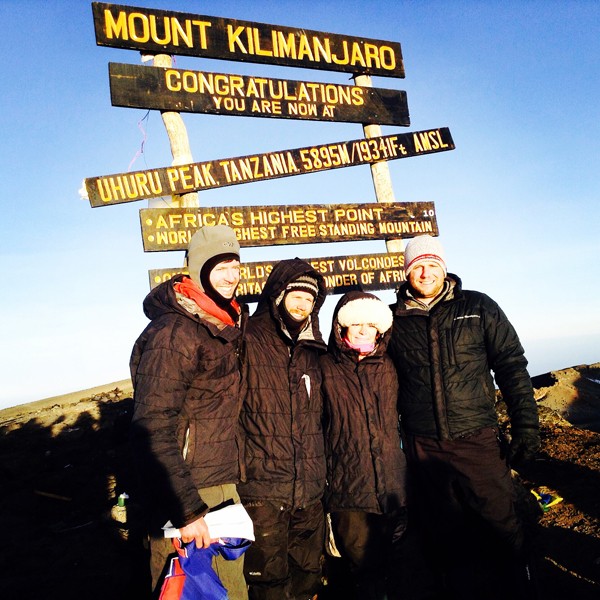Logan Meeks didn’t get the chance to ring in the New Year with his family and friends. Instead, he was more than 8,000 miles away hiking Tanzania’s 19,341-foot Mount Kilimanjaro.
Meeks has been hiking recreationally for nearly two decades, but climbing Mount Kilimanjaro was his most challenging adventure thus far. More than that, it was a way for him to raise funds and awareness for the Benjamin L. Hooks Institute for Social Change, for which Meeks serves as the advisory board chair.
Prior to embarking on the hike, Meeks created a Fundly page with the goal of raising $19,341— a dollar for each foot of the hike. So far, he’s raised more than $8,000.
“To make it to the top and to promote the Hooks Institute at the same time just seemed like a win-win,” Meeks said. “There are a lot of things the Hooks Institute does that I don’t think people really [know or] appreciate. Its programs help people, regardless of race or socioeconomic status, to really participate in life fully here in Memphis in a number of causes.”
The fund-raising campaign ends on January 10th. The money raised will go toward funding various programs offered by the Hooks Institute to help teach, study, and promote civil rights and social change.
From December 30th to January 5th, Meeks hiked Mount Kilimanjaro — the highest peak in Africa and the tallest freestanding mountain in the world. He was paired with a team of hikers from across the globe, along with tour guides.
Each day typically began around 6 a.m., but the number of miles hiked was determined by the weather. A daily diet of rice, beans, and several liters of water kept Meeks nourished during the challenging journey. Each night, he and his group slept in tents at designated campsites as they advanced up the mountain.
 Courtesy Simone Meeks
Courtesy Simone Meeks
Logan Meeks
“It really becomes difficult to sleep on the mountain,” Meeks said. “Your body is used to having gravity accelerate your blood flow, and as you hike to the top, your blood flow minimizes. Therefore, you’re not getting as much oxygen, so when you sleep, your heart rate naturally declines.”
The temperatures on Mount Kilimanjaro change drastically the higher a person climbs. Mount Kilimanjaro has five major ecological zones, each of which is subject to a corresponding decrease in rainfall, temperature, and wildlife as the altitude increases.
Meeks was able to endure the mountain’s extreme climate changes by continually adding layers of clothing during the hike.
“When you start out, you could be hiking in shorts and a T-shirt; the temperatures around base are probably 60 to 70 degrees,” Meeks said. “Once you get to about 15,000 feet, it’s a glacier. And everything above that level is frozen.”
To prepare for the hike, Meeks walked on treadmills and hiked throughout Shelby Forest and Shelby Farms. However, one thing he was unable to prepare for was Kilimanjaro’s altitude.
“One in three climbers don’t make it to the top of Mount Kilimanjaro because of altitude sickness,” Meeks said. “You have to be very slow and very diligent when you get to certain altitude levels.”
Over the course of five days, Meeks hiked very slowly to the mountain’s summit. By that point his body had become acclimated to the area’s weather conditions, so it only took him two days to travel back down.
Aside from his involvement with the Ben Hooks Institute, Meeks is also a partner and vice president of A2H, an architectural, engineering, and planning firm based in Lakeland.